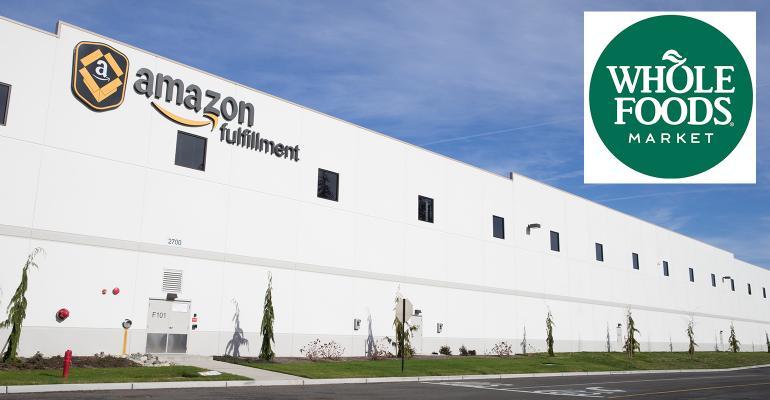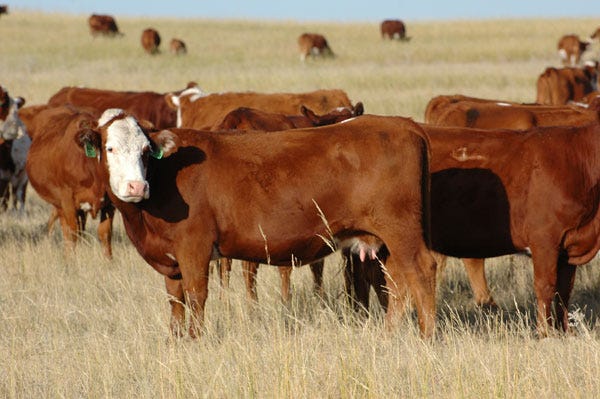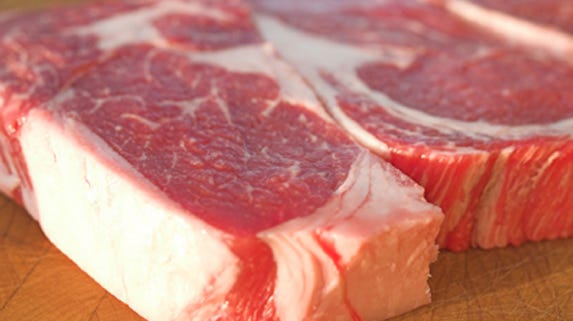5 Trending Headlines: Marfrig’s purchase of National Beef questioned; PLUS: Amazon keeps the heat on
Brazilian meat packer Marfrig’s purchase of National Beef is being questioned by senators. Amazon is taking over the online grocery sales category. That and more awaits you in this week’s Trending Headlines.

Amazon keeps pressure on food retailers
“There is no question that Amazon is winning the online grocery race. While Walmart (Amazon's top competitor) is actively improving their grocery delivery capabilities, that company only captured 9% of the online grocery market in 2017, half of Amazon's 18% market share,” Nathan Rigby, vice president of sales and marketing at One Click Retail, wrote in the Salt Lake City-based firm’s “Amazon Grocery Q1 2018 Update U.S.” report.
“Amazon is investing in grocery from numerous angles — Whole Foods, Amazon Go, Prime Now, Pantry — and no matter what sticks and what doesn't, every quarter Amazon's share of the online grocery sales channel is getting bigger,” he noted, according to Supermarket News.
Senators call for review of Marfrig’s acquisition of National Beef

Senator Chuck Grassley of Iowa, along with Ranking Senate Agriculture Committee Member Debbie Stabenow (D-Mich.) and others are urging the Committee on Foreign Investment to review the proposed purchase of National Beef Packing Company by Brazil's Marfrig Global Foods. The Senators point out that the proposed acquisition follows a 2017 corruption scandal in Brazil's food safety system that revealed unacceptable safety and quality issues with Brazilian beef intended for the American market, which included Marfrig Global, according to the Oklahoma Farm Report.
Citing the Smithfield acquisition by a Chinese company, and the ChemChina-Syngenta merger, the senators say, "It has become increasingly clear that growing foreign investment in U.S. agriculture requires a thorough review process to safeguard the American food system."
BLM using cattle to decrease wildfire risk

There was a time, not too long ago, when the idea of cattle producers and BLM working together was unthinkable. Ranchers and the Bureau of Land Management are teaming up to help prevent another catastrophic fire on the Owyhee Front like the Soda Fire in the summer of 2015. It’s well known the two sides have not always seen eye-to-eye when it comes to grazing on public lands, but this new effort could prove to be beneficial for all, reports KTVB-TV, Boise, Idaho.
The Targeted Grazing Project is a three- to five-year experiment taking place in the Soda Fire Burn Scar to see if cattle grazing can be used to provide fuel breaks for firefighters. The goal for cattle to chow down on cheatgrass, a fuel for wildfires. Ranchers participating in the project will be grazing their cattle on more than a 30 mile stretch of land from March to the end of June.
Five tips for managing parasites in your herd

Grazing management, proper biosecurity protocols, monitoring parasite loads, and strategic deworming are all tools producers can use to manage for parasites, says John Gilleard, with the University of Calgary’s faculty of veterinary medicine.
He also suggested following the “Five C’s”:
Correct product: Using two separate classes of parasite control products with two different modes of action (i.e. fenbendazole and ivermectin) is most effective.
Correct animal: Different classes of cattle have different parasite challenges. Work with a veterinarian to identify the unique needs of your cows, grass stocker cattle, weaned calves, or feeder cattle.
Click here to read the remaining three C’s of parasite management from Alberta Farm Express.
Beef demand holding strong so far in 2018

"Retail beef prices continue to hold up well relative to pork and poultry prices,” says Derrell Peel, Extension livestock marketing specialist at Oklahoma State University. "The ratio of retail beef price to both pork and broiler continues to hold strong despite growing supplies of beef, pork and poultry.”
"Net meat exports are projected to move just over 12% of total meat production offshore this year and hold per capita domestic meat consumption to 219.4 pounds, retail weight. This level is 1.3 pounds higher than last year and the highest total meat consumption since 2007, but below the record level of 221.9 pounds in 2004. Strong domestic and international meat demand will be critical to minimize the supply pressure on meat prices in 2018."
Click here to read Peel's full analysis.
About the Author(s)
You May Also Like


.png?width=300&auto=webp&quality=80&disable=upscale)
